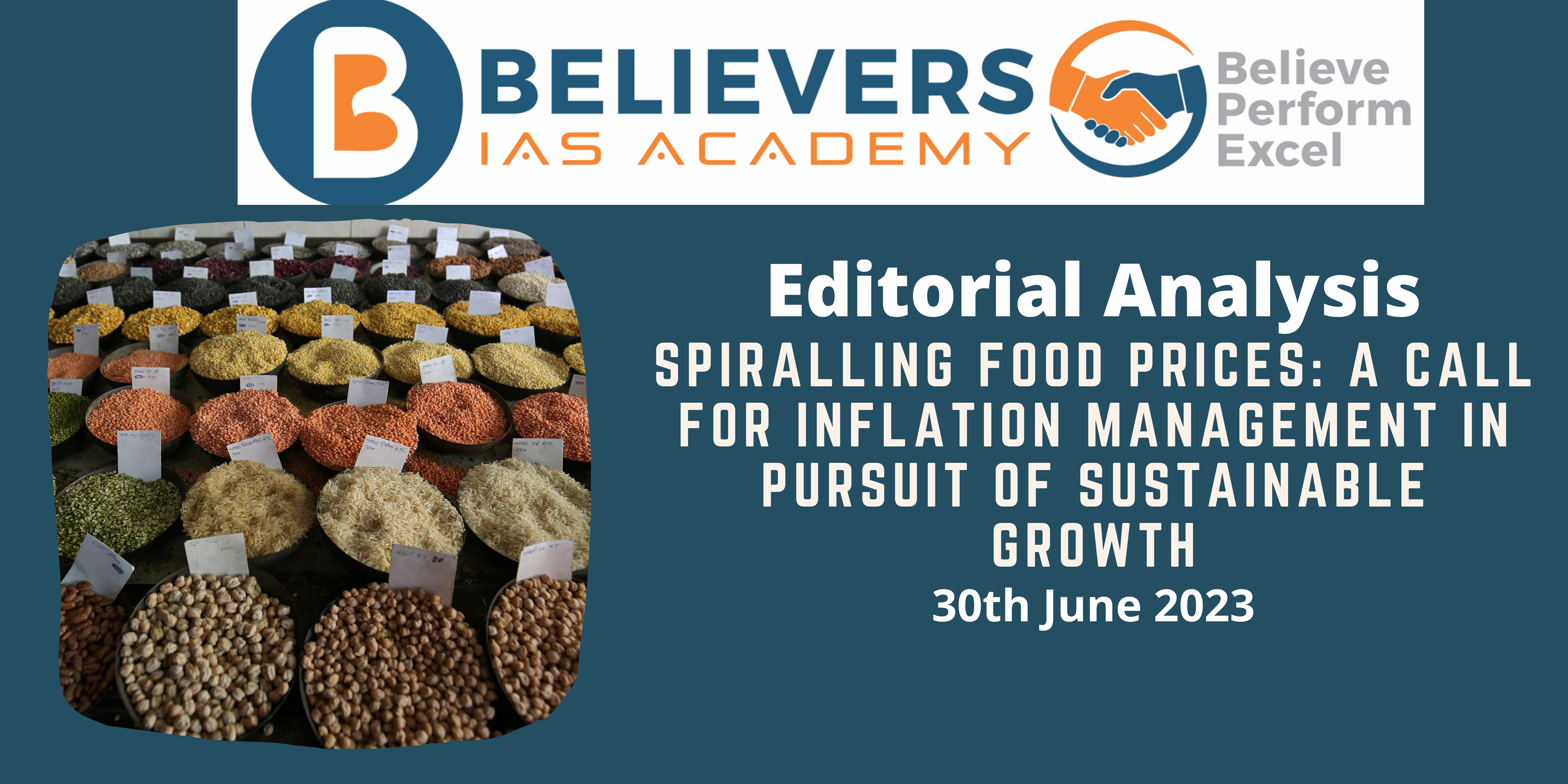Spiralling Food Prices: A Call for Inflation Management in Pursuit of Sustainable Growth
Context:
The rising prices of essential kitchen staples have once again posed a significant challenge for Indian households. From tomatoes, onions, and potatoes to tur dal and rice, the prices of these basic commodities have witnessed a sharp surge. This alarming trend calls for a closer examination of the underlying inflationary pressures in the economy. Policymakers must take proactive measures to address this issue and safeguard sustainable growth.
Relevance:
GS-02 (Government Policies and Intervention)
GS-03 (Indian Economy- Inflation)
Prelims:
- Consumer Price Index (CPI)
- Wholesale Price Index (WPI)
- Reasons affecting Inflation in India
- Types of Inflation
Main Questions:
- What are the factors contributing to the surge in food prices and Discuss the role of policymakers in curbing inflation and ensuring price stability in the country. (250 words)
Dimensions of the Article:
- Causes and Dynamics of Rising Food Prices
- Seasonality and Supply Factors
- Implications and the Risk of Accelerating Inflation
Causes and Dynamics of Rising Food Prices:
Tomato Prices: A Puzzling Surge
- The all-India average retail price of tomatoes has more than doubled within a month.
- Data from the Consumer Affairs Department’s Price Monitoring Division reveals an increase from ₹24.37 per kilogram on May 29 to ₹53.59 on June 29.
- The steep rise in tomato prices is indicative of the broader inflationary trends in the economy.
Onion and Potato Prices: An Unsettling Trajectory
- While the increase in onion and potato prices over the same period appears less severe at 7.5% and 4.5%, respectively, it reflects a larger pattern of inflationary pressure in the food basket.
- The overall surge in prices across various food items signals a concerning build-up of inflationary pressures.
Tur Dal: Rising Costs and Implications
- Tur dal, a vital protein source for vegetarian households, continues to experience an upward price trend.
- Government data shows a 7.8% month-on-month increase, with tur dal priced at ₹130.75 per kilogram on June 29.
- Retail inflation data for May indicates that pulses, including tur dal, have risen by 128 basis points year-on-year, reaching a 31-month high of 6.56%.
- Despite the government’s imposition of stock limits on urad and tur, price gains in lentils remain unabated.
Seasonality and Supply Factors:
- The prices of agricultural produce are influenced by factors such as harvest timings and prevailing mandi prices during transportation.
- Recent instances of farmers in rural Maharashtra dumping tomatoes due to unremunerative prices highlight the impact of seasonality and market dynamics.
- However, even considering the seasonality component, the prices of certain food items, including tomatoes, remain substantially higher compared to the same period last year.
- Arrival price data from government agmarket websites indicate a three-fold increase in tomato prices year-on-year, reaching ₹5,579 per quintal on June 29.
- Similarly, tur dal prices have risen by 35%, while common paddy (rice) has seen a 19% increase.
Implications and the Risk of Accelerating Inflation:
- The current deficit in monsoon rainfall, which stands at 13%, poses a significant risk to food prices.
- Uncertainty looms over the spatial and temporal distribution of rainfall in the coming months due to El Niño, further exacerbating the situation.
- If not addressed promptly, rising food prices could lead to an acceleration in retail inflation.
- Policymakers must prioritize price stability as a crucial component of high and sustainable inclusive growth, as highlighted by the Reserve Bank of India’s economists.
Way Forward:
To mitigate the impact of spiraling food prices and ensure sustainable growth, policymakers must take decisive actions:
- Strengthen Supply Chains:
- Improve infrastructure and logistics to reduce post-harvest losses and ensure timely delivery of produce to markets.
- Enhance storage facilities to prevent wastage and control price volatility.
- Promote Agricultural Reforms:
- Encourage diversification of crops and promote sustainable farming practices.
- Invest in research and development to enhance agricultural productivity and reduce dependence on specific crops.
- Address Market Imperfections:
- Foster competitive markets by promoting transparency, fair trade practices, and removing barriers to entry for new players.
- Enhance price monitoring mechanisms and improve market intelligence to anticipate price fluctuations.
Conclusion:
The surge in food prices, particularly the sharp rise in tomatoes, onions, and potatoes, raises concerns about the underlying inflationary pressures in the economy. Policymakers must prioritize curbing inflation and ensuring price stability to foster sustainable growth. By strengthening supply chains, promoting agricultural reforms, and addressing market imperfections, the government can mitigate the impact of rising food prices and create an environment conducive to inclusive and sustainable development. Only by taming inflation can the nation pave the path to a prosperous future for all.



